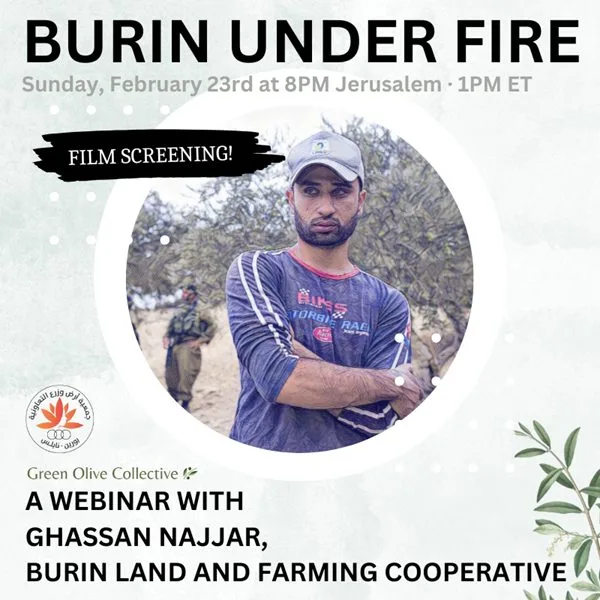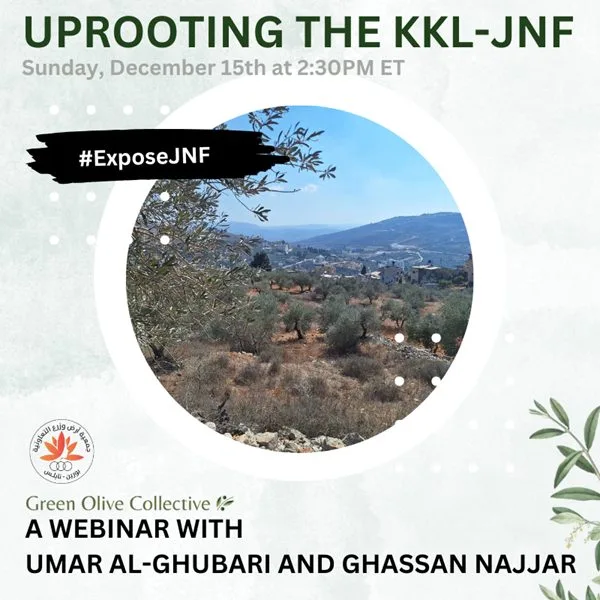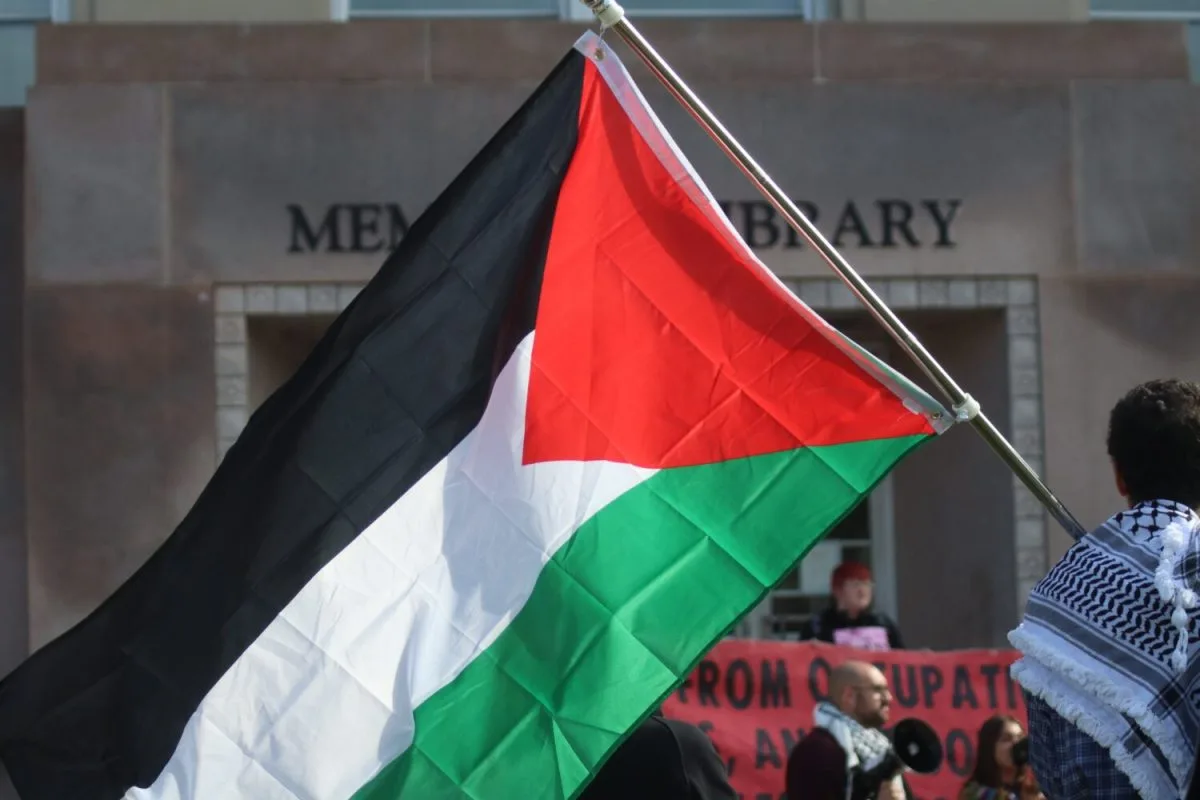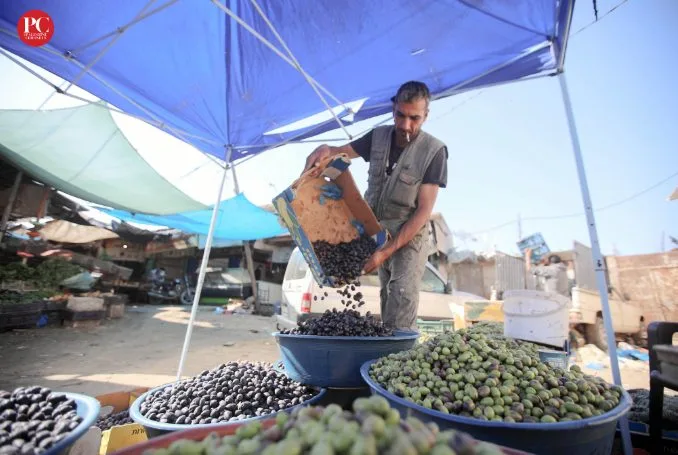The Madison-Rafah Sister City Project (MRSCP)
olive oil
Jul 16, 2025
May 3, 2025 Update: Palestine Solidarity Fair
Friends Meeting House, 1704 Roberts Ct, Madison, 2-4:30 pm Open House
Mar 23, 2025: Update From Palestine
Madison Christian Community, 7118 Old Sauk Rd, 9:00 am
Mar 8, 2025: Overture Center International Festival
Madison, 10 am – 5 pm
Feb 23, 2025: Screening of “Burin Under Fire”
Online 12 PM CT
December 13: The War on Palestine and Lebanon and its Environmental Effects
Online 11 am CT On Rendering Uninhabitable: The War on Palestine and Lebanon and its Environmental…
Dec 15, 2024: Uprooting the Jewish National Fund
Online 1:30 pm CT Join the Green Olive Collective to discuss the central role of…
In Masafer Yatta There’s No P In PTSD
WORT 89.9FM Madison · In Masafer-Yatta there’s no P in PTSD WORLD VIEW, DECEMBER 8,…
Dec 7, 2024: Fair Trade Holiday Festival
Monona Terrace8 am – 3 pm Madison’s 28th Annual Fair Trade Holiday Festival MRSCP, Palestine…
Olive Harvest 2024 will honor the resilience of Palestinian families
By Omar Waheed, Madison 365, Oct 15, 2024 A community event to highlight Palestinian resilience…
‘Destructive Impact’ – Israeli War Destroys 75% of Olive Trees in Gaza
Palestine Chronicle Staff, October 20, 2024 Palestinians in the besieged Gaza Strip were only able…
November 30, 2023
Live Event: Palestinian Olive Oil & Dates from the West BankShop now | Get Involved | Events Supporting Palestinian Farmers in the West Bank: Our…
Gaza’s olive harvest from farm to table
Widely regarded as the most blessed time of the year, Palestinian families in Gaza wait…
July 23, 2022
Madison-Rafah Palestinian Crafts Yard Sale318 W. Lakeside Street Madison [map] 10 am – 3 pm Mark your calendars… MRSCP…
June 4, 2022
Sidewalk Sale of Olive Oil, Crafts & Jewelry!1924 East Dayton Street, Madison (First Street between E. Washington and E. Johnson) 8:00 am…
Madison’s Virtual Fair Trade Holiday Festival is Open!
Our online store, Madison-Rafah Marketplace, has added crafts to our olive oil sales. We offer…
November 2020
Virtual Fair Trade Holiday FestivalDear Members and Friends of MRSCP, Mark your calendars for the upcoming Madison Fair Trade…
The Madison-Rafah Marketplace is Open!
In keeping with the times, we are now offering Palestinian Olive Oil and Donation and…
February 29, 2020
International FestivalOverture Center 201 State Street Madison 10 am – 5 pm Join MRSCP and many…
Mark Your Calendars: 2019 Fair Trade Holiday Festivals
November 24: 9 am – 2 pm Annual Fair Trade Sale at Orchard Ridge United…
July 24-25, 2019
Gaza Freedom Flotilla Comes to Madison!Photos: Jim Maas/FUS Social Justice Ministry, Tsela Barr/MRSCP, and Kit Kittredge/NA Boat to Gaza Campaign…
February 23, 2019
International Festival at Overture Center201 State Street Madison 10 am – 5 pm Once again Overture celebrates the rich…
March 3, 2019
Hashtag to Headlines: How the Gaza Great March of Return Challenged the WorldJoin us for the 2019 tribute to Rachel Corrie with Ahmed Abu Artema Writer,…
South Hebron Hills Update
Expulsion by a thousand cuts Dear Friends, The last weeks have been busy and challenging…
November 18, 2018
Orchard Ridge Holiday Fair Trade FairNovember 18, 2018 Orchard Ridge United Church of Christ 1501 Gilbert Road, Madison 9 am…
December 1, 2018
Monona Terrace Fair Trade Holiday FestivalMonona Terrace Convention Center 1 John Nolen Drive, Madison 8 am – 3 pm Come…
February 24, 2018:
International Festival at Overture CenterFree performances, food, and crafts from all over the world. MRSCP was selling our Palestinian…
December 2, 2017
Fair Trade Holiday FestivalMonona Terrace Convention Center 1 John Nolen Drive, Madison 9 am to 4 pm Come…
November 19, 2017
Orchard Ridge Fair Trade FairFeaturing beautiful and unusual holiday gifts and items from around the world. All proceeds go…
February 25, 2017
International FestivalOverture Center State Street, Madison 10 am – 5 pm Take a trip around the…
December 3, 2016
Madison’s Fair Trade Holiday FestivalGifts with a Story Monona Terrace Convention Center 1 John Nolen Drive, Madison 9 am…
November 20, 2016
Orchard Ridge UCC Fair Trade FairSunday, November 20 Orchard Ridge United Church of Christ 1501 Gilbert Rd, Madison [Map] Annual…
Update: April 3, 2016
Annual Rachel Corrie CommemorationSunday, April 3, 7 pm, Christ Presbyterian Church 944 East Gorham Street, Madison WI You…
Loving the Land and It’s People: Palestinian Hospitality
Veena Brekke, Madison-Rafah Sister City Project, October 31, 2012 On October 28th we departed the…
August 8 – 10, 2008
Rafah Soccer Tournament: Benefit Garage SaleShafia Powell and her friend Nabila have generously offered to host a garage sale next…
May 12, 2007
A Palestinian Crafts Extravaganza[pdf-embedder url=”http://madisonrafah.org/wp-content/uploads/2016/06/escape_party_flyer.pdf”]









